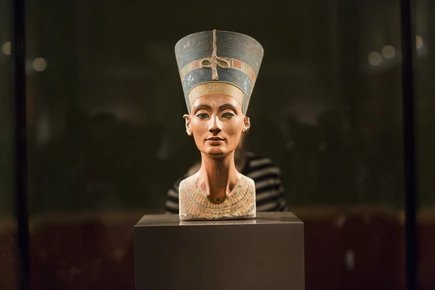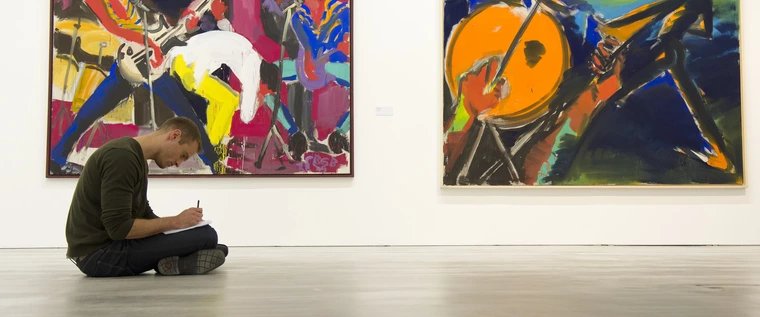
Berlin's First Museum
A visit to Museum Island is now a regular part of the itinerary for many visitors to Berlin. Since its opening in 1830, what was initially known as the Royal Museum quickly became a magnet for visitors. But the museum experience back then was completely different than it is today.
The special exhibition on the upper floor of the Altes Museum provides fascinating insights into the museum's beginnings and showcases a selection of antiquities that were already on display in the first permanent exhibition in 1830.
On July 9, 1825, the foundation stone was laid for the museum designed by Karl Friedrich Schinkel in Berlin's Lustgarten. Just five years later, on August 3, 1830, the first public museum in Berlin and Prussia was opened to the general public. The Altes Museum quickly became a magnet for visitors and remains an important institution for fundamental archaeological research to this day.
The special exhibition not only explores Schinkel's structural challenges and innovative solutions, but also the social context and the very different appearance of the exhibition spaces, which were completely destroyed in World War II.
A large-scale model at the center of the exhibition provides an impression of Schinkel's original building, of which only a few pictorial representations from the museum's founding period and historical photographs from the late 19th century provide an idea.
Schinkel's Stroke of Genius
The Altes Museum truly marks a turning point in the architectural history of public buildings for art: For the first time ever, a building was designed specifically as an art museum. Karl Friedrich Schinkel created a building type that would shape museum design for decades to come.The architect Schinkel faced significant technical and financial challenges in constructing the museum – the Prussian King Friedrich Wilhelm III demanded extreme austerity, so innovative yet cost-effective solutions had to be developed.
Ancient Art – and Old Masters!
While the ground floor displayed small antique artefacts – particularly vases, bronzes, terracottas, as well as gems, cameos, and coins – the main floor, with its rotunda, was dedicated to ancient (primarily Roman) sculptures, and the upper floor to the Royal Picture Gallery. The latter, for content and conservation reasons, can only play a supporting role in our exhibition, but will be prominently featured in a major anniversary exhibition planned for 2030 in the James Simon Gallery.The Bourgeoisie's Appreciation of Art and its Hunger for Knowledge
The museum's opening coincided with a time of rising bourgeoisie and the propagation of new educational ideals. The public demanded freely accessible opportunities to view art, and Frederick William III promoted this idea for the education of his subjects. The museum quickly became a popular destination for the educated middle class far beyond Prussia.
- But how accessible was it actually?
- Which visitor groups flocked to the museum, and which works of art particularly fascinated them?
A Look into the Future
The special exhibition presents a cross-section of the works of art that were already on display in the Altes Museum's first presentation. Sculptures, vases, bronzes, and terracottas tell the story of a collection that continues to inspire today.
At the same time, the exhibition is not conceived as a pure retrospective, but rather also offers a glimpse into the future, and thus into the period following the urgently needed general renovation of the museum.
The public is therefore asked: How must the museum continue to develop in order to continue to inspire future generations with its interest in ancient art?
The exhibition is curated by Angelika Walther, former research assistant at the Museum of Antiquities, in collaboration with Andreas Scholl, Director of the Antikensammlung, and Moritz Taschner, research associate at the Antikensammlung. Along with other participating colleagues, the project benefits from the profound expertise of Elsa van Wezel, who has researched and published extensively on the early history of the Altes Museum and Neues Museum.
A companion publication will be published to accompany the exhibition.
The exhibition is supported by the "Association of Friends of Antiquity on Museum Island Berlin" and the event company "Museum & Location" of the Berlin State Museums.
A special exhibition of the Antiquities Collection of the Berlin State Museums








